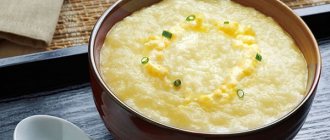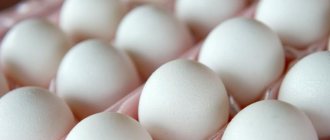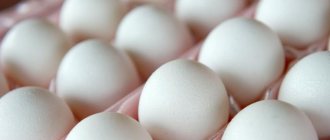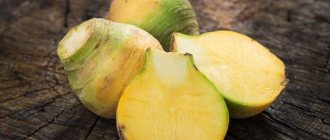Salad with broccoli and hearts
A hearty, healthy dish, served as a main dish or as a cold appetizer.
- hearts – 300 g;
- broccoli – 250 g;
- red lentils – 130 g;
- lemon - quarter;
- garlic – clove;
- red onion – 1 piece;
- balsamic vinegar – 2.5 tablespoons;
- olive oil – 5 tablespoons;
- mustard - a small spoon;
- salt is added to taste.
- Chop the onion into rings, put in a bowl and pour in vinegar, leave for 15 minutes, stirring occasionally;
- Rinse the hearts, remove the film, boil in water with added salt;
- Take the broccoli into pieces, add hot water, add salt and boil;
- Place the cabbage in a sieve and cool;
- Rinse the lentils and boil, then cool and put in a salad bowl;
- Coarsely chop the cabbage, the main product, and squeeze out the garlic;
- Mix mustard, oil and lemon juice;
- Combine all salad ingredients together;
- Garnish with onion rings.
Top 20 delicious and low-calorie recipes for losing weight
Despite the fact that fried chicken hearts have a wonderful rich taste, this cooking method should be immediately excluded, as it significantly increases the calorie content of the finished dish.
Salad with broccoli and lentils
- Chicken hearts – 300 gr.
- Broccoli – 250 gr.
- Red lentils – 100 gr.
- Onion – 2 pcs.
- Lemon - ⅓ pcs.
- Garlic – 2 cloves.
- Olive oil – 50 gr.
- Balsamic vinegar – 40 ml.
- Dijon mustard – 10 gr.
- Chop the onion into half rings and pour vinegar over it.
- Boil cabbage and lentils.
- Boil the peeled hearts in lightly salted water with the addition of bay leaf and pepper (peas).
- Cool all ingredients.
- Mix oil, finely chopped garlic, mustard and lemon juice in a separate bowl.
- Combine all the ingredients of the dish, mix gently and let the salad brew for 15-20 minutes.
Stewed hearts in sour cream
Popular dish. Served with a side dish of boiled rice or mashed potatoes. The recipe can be supplemented with champignon mushrooms.
- chicken hearts – 400 g;
- low fat sour cream – 250 ml;
- onion – 2 pcs;
- wheat flour - a tablespoon;
- sunflower oil;
- salt is added to taste;
- ground black pepper.
- Rinse the by-product, cut into 4 parts;
- Chop the onions, fry with oil until golden brown;
- Place the hearts in a frying pan, simmer with added water over low heat, cover with a lid;
- Add sour cream, flour, salt and pepper;
- Mix the ingredients thoroughly and cook until the sauce thickens;
- Before serving, sprinkle chopped parsley on top.
The use of chicken hearts in cooking
Usually chicken hearts are boiled or stewed with onions. The basic rule in this case remains the mandatory removal of the greasy film from a small heart.
The fried version of the product (especially in egg or bread batter) adds more calories than boiled and stewed.
Some chefs put the hearts on skewers and bake them in the oven like a kebab.
Some people prefer to make minced meat from chicken by-products (hearts, gizzards, liver) and make cutlets, adding only an egg.
The most delicious are those stewed in sour cream with carrots, eggplant and herbs. They can be eaten with side dishes of rice, buckwheat or potatoes.
Chicken hearts, the benefits and harms of which we will consider for the human body, can be used both for preparing first courses and for preparing second courses, not only in a frying pan, but also in the oven. Chicken gourmets advise making shish kebab or pate from the hearts and thus falling in love with these offal products forever.
Light soup
A healthy, nutritious and tasty option for your everyday lunch meal. The set of vegetables for the soup can be changed.
- main offal – 500 g;
- potatoes – 3 pcs;
- bell pepper – 1 piece;
- tomato – 2 pcs;
- bay leaf – 2 pcs;
- greenery;
- sour cream is added to taste;
- pepper and salt.
- Wash the hearts, cut into halves, put in a pan with water;
- Bring to a boil, skim off the foam and lower the heat;
- Boil for 10 minutes, then add potatoes;
- Add salt and cook for 7 minutes;
- Cut the pepper into squares;
- Rinse the tomatoes with boiling water, remove the peel, coarsely chop the pulp;
- Place the vegetables in a saucepan along with the bay leaf;
- Boil the soup for 7 minutes, then pour in the herbs and let the soup stand for 5 minutes under the lid;
- Pour into plates, add sour cream and pepper.
Chicken hearts during pregnancy and breastfeeding
For young mothers and those who will soon become them, it is useful to take note that such a product exists. The benefits of chicken hearts for pregnant and postpartum women are enormous due to the high risk of anemia associated with bearing a child. Pregnancy and lactation are characterized by an increased need for iron.
The micro- and macroelements, vitamins and amino acids contained in chicken hearts make them essential and even indispensable participants in the growth of the baby’s body.
Advice! When breastfeeding, women need to introduce hearts into the diet gradually, no earlier than 3-4 months from the start of feeding, since in the early stages the product can be harmful to the child’s well-being.
Roast with mushrooms
The roast turns out delicious, easy to prepare, although it takes some time. The dish will be more refined if you add nutmeg, pepper, bay leaf and rosemary.
- eggplant – 1 piece;
- green apple – 1 piece;
- bulb;
- champignon mushrooms – 500 g;
- olives - jar;
- dill and cilantro - a bunch;
- hearts – 400 g;
- garlic.
- Cut the mushrooms into cubes or slices, fry with the addition of oil so that the mushrooms release their juice;
- Add the onion and do not remove the pan until the onion turns golden;
- Place fried onions and mushrooms in a cup, add herbs and chopped apple;
- Soak the eggplant in water and cut into cubes;
- Fry the eggplant and heart halves;
- Add everything else, plus spices;
- Stir, pour in a third of a glass of boiling water and simmer for 5-10 minutes;
- At the end add garlic for flavor.
Dietary hearts in cream sauce
The basis of the recipe is spices and creamy sauce. The peculiarity of the recipe is that the hearts are fried in their own juice and then supplemented with other ingredients. This allows you to reduce the calorie content of the dish. Buckwheat, rice, and fresh flatbread can be a side dish.
- main product – 500 g;
- onion – 1 piece;
- cream 10% fat – 100 ml (optional);
- Khmeli-suneli seasoning.
- Rinse, clean the heart, fry under a closed lid over low heat (without adding oil) for 7 minutes;
- Add chopped onion, pepper, salt, seasoning, cream;
- Simmer for 30-40 minutes over low heat, cover with a lid, stir occasionally.
Heart chops
The dish is served as a cold appetizer. True, you will have to tinker with it a little, but the chops turn out juicy, tender, with a thin crispy crust. Plus, this is a great recipe for those on a diet.
- Rinse the hearts, dry them, cut off the arteries;
- Make a transverse cut along each piece (to increase the area of the heart);
- Place the pieces on a board, cover with film and beat off;
- Beat the egg separately, add salt and pepper;
- Dip a piece of meat in the batter, then roll it in a plate with flour;
- Fry in a frying pan with added oil until golden brown and crusty;
- Serve with sauce or herbs.
Jellied
The recipe is suitable for a holiday table. The dish can be made in portions in molds.
- heart – 500 g;
- chicken carcasses and trimmed chicken meat – 500 g;
- agar-agar seasoning;
- salt pepper;
- Trim fat from hearts, boil for 40 minutes;
- Separately, cook chicken bone broth (cook for 40 minutes, add salt and 2 peppercorns);
- Place the finished hearts in the mold, cut side to side;
- Strain the broth, dissolve agar-agar there (a spoonful of seasoning per 1.5 cups of liquid);
- Boil the liquid with agar-agar and simmer for 3 minutes to activate its gelling properties;
- Fill the mold with broth. The layer is equal to the height of the meat;
- The aspic should harden within 3 hours.
At what age can chicken hearts be given to children?
First, the child must be accustomed to different types of meat. Then, at about 9 months of age, chicken hearts can be introduced as complementary foods. For this purpose, it is more useful to use homogenized puree; it tends to be easier to digest by the stomach. You should start with half a teaspoon, gradually increasing to 40-50 g. It is better to give such complementary foods in the first half of the day, first monitoring the baby’s condition.
Attention! When introducing chicken heart into your diet, you should follow the norm, otherwise the expected benefit may result in harm from cholesterol and fatty acids. For children, the restriction on the consumption of complementary foods by offal is no more than 2 times a month.
Braised chicken hearts
Many girls, when switching to a diet, completely lose their heads and forget about health. Nutrition should be balanced, with reduced carbohydrate intake. Then you can quickly and effectively lose weight, and the kilograms will not return. You also need to eat enough protein, which meat is especially rich in. Today we will prepare delicious chicken hearts at home.
Although the dish is intended for those who are trying to lose weight, do not think that by eating hearts at 10 pm you will see the effect. It contains enough calories that should be converted into energy and spent during the day. The maximum allowed time is one o'clock in the afternoon. After this time, this dish is not recommended for those losing weight.
What are the benefits of chicken hearts for the human body?
Chicken hearts may be associated with several potential health benefits.
Good source of protein
Chicken hearts are an excellent source of protein, with each 100-gram serving providing 26 grams ().
Protein is essential for many aspects of health, including building and maintaining muscle mass, immune function, and growth ().
Some research also suggests that increasing your protein intake may help regulate appetite, reduce food cravings, and increase feelings of fullness, which may be beneficial for weight loss ().
Additionally, high protein foods such as chicken hearts can also increase muscle growth and strength when combined with resistance training (,).
Rich in iron
Chicken hearts are rich in iron, and one serving can significantly increase your intake of this mineral.
Iron is necessary not only for oxygen transport and DNA synthesis, but also for the production of healthy red blood cells ().
In addition, an estimated 1.6 billion people worldwide are deficient in iron, the most common type of deficiency among other nutrients in the world.
This condition can cause a wide range of symptoms, including weakness, fatigue, impaired immunity and digestive problems ().
Eating a variety of iron-rich foods—including chicken hearts—is one of the best ways to ensure you're meeting your needs for this mineral and protected from iron deficiency.
Helps reduce food waste
Chicken hearts can be a sustainable, affordable and environmentally friendly addition to a healthy diet.
What's more, adding chicken hearts to your diet is a great way to reduce food waste and minimize your environmental impact.
This is because eating all parts of the animal, including less popular cuts of meat or organ meats, can help ensure nothing goes to waste.
This is based on a philosophy called nose-to-tail eating, which encourages eating every part of the animal to maintain sustainability.
Summary:
Chicken hearts are rich in protein and important nutrients such as iron. Including chicken hearts in your diet can also help combat food waste by using every part of the animal.
Energy value per 100 g:
- proteins - 9.71 g;
- fats - 7.50 g;
- carbohydrates - 2.20 g;
- calorie content - 115.67 kcal.
Ingredients:
- chicken hearts – 500 g;
- champignons – 200 g;
- onion – 1 pc.;
- ground black pepper 0.5-1 tsp;
- sour cream 10% - 200 g.
Cooking method:
- We wash the main product well and put it in a frying pan. Please note that it must be dry and oil must be used.
- Cut the champignons into pieces and add to the hearts.
- Cut the onion into half rings or cubes. If the onion is not large, then use 2-3. There should be a lot of this product.
- Close the lid and simmer for 10-15 minutes. There is no need to add additional water. Then sprinkle generously with ground black pepper and mix. Be sure to try it. If you feel that there are not enough spices, you can add more. Since the dish is dietary, we do not add salt.
- Simmer for another 2-3 minutes. Then pour in sour cream.
- And simmer again for 5-7 minutes. Be sure to taste the heart so that it is not raw inside. In this case, the extinguishing time can be increased. The dish is ready and can be served.
Little secret: To make the dish as healthy as possible, choose chilled hearts rather than frozen ones. They should be dense to the touch, have a smooth, beautiful structure without damage. The finished dish is served without a side dish and you can eat a maximum of 200 g at a time. If you have a large family, then hearts can be prepared for everyone, but then use mashed potatoes, rice or pasta as a side dish.
Nutritionist advice. Since the calorie content of the finished dish is low, it is necessary to supplement it with other products. If this concerns lunch, then you can diversify the menu with vegetable soup, whole grain yeast-free bread, baked or raw vegetables.
Subscribe to our newsletter
You will receive a selection of useful articles about healthy eating, healthy exercises, as well as proven diets and discounts on courses
The site was created for general educational purposes. Any published information is provided for informational purposes only and is not a direct guide to action. We recommend seeking the advice of a professional before using any tips, diets, products or techniques described. This will help you achieve better results and avoid unwanted consequences. Remember, everyone is personally responsible for their health.
When using site materials, a backlink is required!
Are hearts suitable for weight loss, proper nutrition and diet?
By-products are often included in the menu of people with weakened bodies due to their unique chemical composition. And chicken hearts are no exception.
They contain a large number of different microelements:
- iron – participates in the production of hemoglobin;
- copper – affects the secretion of endorphin hormones and maintains the elasticity of muscle fibers;
- cobalt – stimulates cell regeneration and plays an important role in the treatment of diabetes and anemia;
- calcium – strengthens bone tissue;
- zinc – takes part in protein synthesis;
- phosphorus – is an important component of mineralization (growth of teeth, hair) and metabolism;
- magnesium – supports the functioning of the endocrine and cardiovascular systems, and sulfur – healthy intestinal microflora;
- potassium – restores water-salt balance, stimulates brain activity;
- sodium – normalizes blood pressure and gastrointestinal function.
Amino acids and proteins are responsible for transporting nutrients to cells, and B vitamins regulate the functioning of the central nervous system and are responsible for the condition of the skin and mucous membranes.
Chicken hearts are useful for children due to their powerful stimulation of growth, as well as strengthening of the immune system. People on a diet - due to its low calorie content and long period of absorption, which creates a feeling of satiety.
When consuming this product in the process of losing weight, you must choose the right cooking method and carefully consider the processing of hearts before cooking.
Organic products sold in stores are usually ready to eat. However, dietary recipes for chicken hearts require the removal of films and fat, which contain the main cholesterol.
Processing includes the following actions:
- Rinse thoroughly and soak the product for 40-60 minutes in cold water.
- Carefully trim the fat from the base of each heart.
- Use a knife to pry off the film and remove it from the muscle mass.
- Cut each heart and clean it from the inside.
Important! After processing the product, the total weight will be significantly reduced. This factor must be taken into account when purchasing.
How to cook chicken hearts
Usually the question: “How to cook chicken hearts?” There are a lot of recipes using butter, sour cream, and, in addition, flour. All this, of course, is great, but it’s not very suitable if you’re counting calories. One far from impressive serving of such a dish will contain almost 300 kcal, mainly from fats rather than proteins. Therefore, it is definitely worth looking for a healthier alternative. But many people don’t like hearts simply boiled in water with spices. If you are one of them, try to learn how to make changes to delicious recipes to make them lower in calories.
Contraindications to eating chicken hearts
Provided normal tolerance, chicken hearts are not contraindicated during pregnancy.
Children under 8 months should not be given chicken hearts. If an older baby does not have digestive problems and tolerates meat complementary foods well, you can add this product to his menu.
Chicken hearts have virtually no contraindications for consumption.
They should be excluded from the diet only in case of individual intolerance.
How to cook chicken hearts without extra calories
The easiest way is to rinse them and bake them without additional oil, for example, in a bag, or steam them. This is quite tough meat, it will not be very tasty if you just bake it on a baking sheet, parchment or without a lid.
The fastest way is to place the hearts in a chicken baking bag (if you want to lose weight, take one without “factory” seasonings, there are quite a lot of extra ingredients) and cook in the oven at 200 degrees. For those who do not shy away from the microwave oven, there is an even faster method - the same package, 600 W of power, and about 12-14 minutes.
Stewed hearts can be used as an independent meat dish or a meat component in salads, casseroles and other complex dishes.
If you bought “heart + liver” sets on a tray, it’s even easier to prepare - you can simmer them in water with black pepper and onions, you’ll get a pretty passable second course.
What and what to replace in classic recipes with hearts:
- sour cream 20% and fatter - Greek yogurt 5-6% fat, or sour cream 10% fat;
- cream - milk;
- any fat can be conditionally “replaced” by adding chopped stewed red pepper to the dish, or the same grilled vegetable, this will soften the consistency of the dish and add very few calories;
- Replace hard cheese with suluguni or low-fat mozzarella. You can simply reduce the amount of cheese in the recipe by using a finer grater;
- We replace butter for frying with coconut oil, but we do not fry the liver itself in it, but only stew onions and other vegetables in it. In this case, you need to take a minimum of oil and mix the vegetables thoroughly during cooking;
- We replace the mayonnaise in salads with a spoonful of yogurt with the addition of mustard; you can add any vegetables with a “creamy” texture to the salad - baked peppers, tomatoes, eggplants or zucchini, this will make the dish “smoother”, and the lack of fat from mayonnaise in it will be less noticeable.
Useful properties of chicken hearts
Chicken heart is considered the smallest offal that can be prepared as a separate dish. One heart weighs about 30 grams and its size is 4 cm. An average heart weighs about 30 grams and reaches a length of about 4 centimeters. Despite the small size of the chicken heart, it is extremely beneficial for the human body.
Chemical composition of chicken hearts
Calorie content of chicken hearts is 160 kcal. Moreover, they contain 15.8 grams of protein, 10.8 grams of fat, 0.8 grams of carbohydrates.
100 grams of chicken hearts is about 4 pieces. They contain an incredible dose of vitamins and microelements that saturate the body.
Chicken by-products are dietary. Many models choose chicken hearts when losing weight. Also, chicken hearts are included in the diets of athletes when gaining muscle mass. Despite their low calorie content, hearts contain a high concentration of protein, which is necessary for muscle gain.
Chicken hearts contain B vitamins: B1, B2, B5, B6, B9 and B12. The last component is especially important, since B12 is not found in foods of plant origin. It can only be obtained from meat products.
The B vitamin group is responsible for the functioning of metabolic processes in the human body. Regular consumption of food containing them ensures the production of hormones and enzymes.
Chicken hearts contain vitamin A, known for its beneficial properties for vision. It also affects bone strength.
Vitamin PP (nicotinic acid) is also included in chicken hearts. A lack of this vitamin in the body can lead to dermatological diseases.
By-products are rich in potassium, which ensures the strength of the nervous system, phosphorus, necessary for the development of the skeleton and connective tissues, and iron, necessary for improving blood quality. Also, magnesium and copper, which affect the blood, are included in chicken by-products.
It is recommended to add chicken hearts to the diet of people with nervous system problems. They help to recover from long-term stress and serious illnesses. Necessary to speed up healing processes.
How to cook chicken hearts: recipes
Hearts stewed with milk
1 tray of hearts (half a kilo), onions, garlic, dill, carrots, a glass of low-fat milk, parchment.
Chop the vegetables as you like, you can lightly spray them with oil from a spray, if you have one in the kitchen. Place on parchment and bake in the oven at 200 degrees for about 15 minutes. Rinse the hearts in cold water and simmer with water until half cooked in a deep frying pan. Pour in milk. Simmer for 10 minutes. Add vegetables, stir, simmer until done.
Hearts with leeks and yogurt
1 leek stalk, 500 g hearts (also suitable with liver for this recipe), 200 g champignons, 1 white onion, 2 cm celery root, black pepper, salt, a jar of Greek yogurt, fresh dill.
Chop the dill, mix with yogurt and leave. Lovers of fresh onions can add a quarter of an onion to this. Chop the remaining vegetables, place them together with the hearts in a deep frying pan and add water. Simmer until done, stirring occasionally. Serve with yogurt and herbs. Great as a main course with brown rice or broccoli.
Hearts baked with vegetables
Unseasoned baking bag, 500 g hearts, 2 large bell peppers, 1 tomato, 1 carrot, 200 g green beans, 1 teaspoon olive oil, garlic clove, fresh or dried basil.
Prepare the vegetables, cut them, wash the hearts. Place all ingredients in a baking bag, add olive oil and garlic, stir, bake at 200 degrees for about 40 minutes. Place the bag on a baking sheet; juice may leak out during cooking. Carefully remove everything together, and open the bag only after the steam inside has subsided and the dish has cooled down a little, otherwise you can get burned by the steam.
Hearts with mushrooms in mustard sauce
1 jar of Greek yogurt, 20 g of any low-fat mozzarella (which has up to 260 kcal per 100 g, you can also take regular suluguni, which melts), 2 tablespoons of Dijon mustard. Half a kilo of chicken hearts, onion, carrots, bell pepper, 200 g of champignons.
Chop the vegetables together with the hearts, place in a deep frying pan, add water, and cook until half cooked. Mix yogurt with Dijon mustard, add to the dish, simmer until tender. Turn off the heat, sprinkle the hearts with grated cheese and let it melt under the lid. You can do without cheese.
Chemical composition, calorie content, BJU of chicken hearts
Chicken heart contains many vitamins and is rich in iron, magnesium, phosphorus and amino acids.
These elements are especially important for the normal functioning of the cardiovascular system. The by-product contains copper compounds involved in the synthesis of hemoglobin. For healthy food enthusiasts, chicken by-products are of great interest. They are ideal for preparing nutritious meals and help diversify your daily diet. The nutritional value of 100 g of product is 157 kcal. The table shows the content of proteins, carbohydrates and fats in 100 g of chicken hearts.
| Substance | Content per 100 g | % of daily value |
| Saturated fats | 3.3 g | 16,5% |
| Polyunsaturated | 3.3 g | 16,3% |
| Monounsaturated | 1.5 g | 9% |
| Squirrels | 16 g | 10% |
| Carbohydrates | 0.8 g | 0% |
| Sodium | 82 mg | 0,1% |
| Cholesterol | 130.1 mg | 49% |
The calorie content of boiled or stewed offal increases to 183 kcal. The ratio in the BZHU formula has the following values: 20 g (B) * 11 g (W) * 1.1 g (U).
The composition of this by-product is very rich in vitamins and minerals. They contain a lot of B vitamins, also PP, B1, B2, B6. As for the mineral properties, after a person eats hearts for lunch, his body receives molybdenum and cobalt, copper and zinc, manganese and chromium, sodium and magnesium, iron and calcium. In general, a whole range of minerals.
Chicken hearts are small in size, 3-5 centimeters, and weigh 20-30 grams. They are a complex muscle product, so they have quite good nutritional value and several useful microelements:
- 21% protein.
- Vitamins A, B and PP.
- Zinc, iron, phosphorus, copper, cobalt, sodium and magnesium.
- Amino acids - taurine, lysine, isoleucine, leucine, methionine and valine.
The energy value depends on the method of preparing the hearts:
- Steamed – 153 kcal/100 grams.
- Boiled – 157 kcal/100 grams.
- Stew over low heat – 168 kcal/100 grams.
- Fried – 184 kcal/100 grams.
When fried in combination with other types of products, the calorie content of hearts can more than double.
Chicken heart and broccoli salad
This healthy and satisfying salad can be served as an appetizer or main course.
- 300 g chicken hearts; - 250 g broccoli; - 130 g red lentils; - 0.25 lemon; - 1 clove of garlic; - 1 red onion; - 2.5 tbsp. spoons of balsamic vinegar; - 5 tbsp. spoons of olive oil; - 1 teaspoon Dijon mustard; - salt.
Chop the red onion into thin rings, place in a bowl and cover with balsamic vinegar. Leave it for 15 minutes, stirring occasionally. Rinse the chicken hearts, peel off the films, and boil in salted water. Break the broccoli into small florets, pour boiling water over it, add salt and cook until soft. Place the cabbage in a colander and cool.
Rinse the lentils, add a small amount of water and boil. Drain the water, let the lentils cool and place them in a salad bowl. Add the pressed garlic, broccoli and hearts, cut into large pieces. Mix mustard with vegetable oil and freshly squeezed lemon juice, pour the sauce over the salad and stir. Garnish the dish with onion rings and serve.
Possible harm of chicken hearts
While chicken hearts can be a healthy and nutritious addition to the diet of most healthy adults, people with gout may need to reduce their intake.
This is because chicken hearts are rich in purines, a compound found in many foods, including organ meats.
When your body breaks down purines, it can increase levels of uric acid, which can build up in your joints and cause a gout flare-up ().
For this reason, people with gout are sometimes advised to eat a low-purine diet and limit their intake of foods such as chicken hearts ().
Many people are also concerned about the amount of cholesterol found in organ meats such as chicken heart, citing concerns about its potential impact on heart health.
Although chicken hearts contain 242 mg of cholesterol per 100-gram serving, studies generally show that dietary cholesterol is not associated with a higher risk of heart disease or stroke (,).
In addition, it is important to remember that the liver produces about 75% of the cholesterol in the body, and only 25% comes from food ().
Therefore, when you eat foods high in cholesterol, your body can regulate the amount of cholesterol it produces to control your blood cholesterol levels ().
However, people with high blood cholesterol and who are sensitive to dietary cholesterol may want to limit their consumption of chicken hearts and other high-cholesterol foods.
Summary:
People with gout may need to limit their intake of foods high in purines, including chicken hearts. Additionally, although chicken hearts are high in cholesterol, they are unlikely to increase your risk of heart disease or stroke.
Chicken hearts in sour cream
One of the most popular dishes is hearts stewed in sour cream. Serve them with mashed potatoes or rice. If desired, the hearts can be supplemented with thinly sliced fresh mushrooms - for example, champignons.
- 400 g chicken hearts; - 2 onions; - vegetable oil for frying; - 1 glass of sour cream; - 1 tbsp. spoon of wheat flour; - salt; - freshly ground black pepper.
Rinse the hearts thoroughly and cut into 3-4 pieces. Finely chop the onion and fry in a small amount of vegetable oil until golden brown. Reduce the heat, place the hearts in the pan, add a little water and simmer with the lid closed until soft. Then add sour cream, salt, freshly ground black pepper and flour. Mix everything and cook until the sauce thickens. Before serving, you can sprinkle the dish with finely chopped parsley.
Chicken hearts fried with onions
An easy-to-prepare dish for offal lovers.
Ingredients
- 1 kg chicken hearts;
- 3 large onions;
- 1 tablespoon sunflower oil;
- 50 g butter;
- salt, ground black pepper and other spices - to taste.
Preparation
Cut the prepared hearts in half. Boil them or soak them in milk.
Cut the onion into half rings. Grease a frying pan with sunflower oil, then add butter and melt. Fry the onion until half cooked. Add boiled hearts to it, stir. After 5-7 minutes, when the hearts begin to release water, add salt, pepper and other spices to taste. This will enhance the release of moisture.
Cover with a lid and roast for 20-25 minutes. Stir occasionally. Serve with your favorite side dish.
Soup with hearts
A tasty and nutritious option for everyday meals is chicken heart soup. The set of vegetables can be varied.
- 500 g chicken hearts; - 1 large sweet pepper; - 3 medium-sized potatoes; - 2 ripe tomatoes; - 2 bay leaves; - salt; - freshly ground black pepper; - a bunch of parsley, dill and celery; - sour cream to taste.
Rinse the by-products, cut them in half, place them in a saucepan and cover with cold water. Bring the water to a boil, skim off the foam and reduce the heat. Boil the hearts for about 10 minutes, then add the peeled and medium-sized potatoes to the pan. Add salt to the soup and cook for another 7 minutes. Peel the sweet peppers from partitions and seeds, cut into squares. Pour boiling water over the tomatoes, remove the skin, and chop the pulp coarsely. Place vegetables in soup, add salt and bay leaf. Cook the soup for another 7 minutes, add a handful of herbs and let the dish stand for 5 minutes with the lid closed. Pour the soup into bowls, pepper and season with sour cream.
Chemical composition, calorie content, BJU of chicken hearts
Only this type of offal has the highest nutritional value. Dishes prepared with chicken hearts taste very good. They are very easy to prepare. All nutritionists in the world recommend including this product in your diet a couple of times a month. But you shouldn’t eat chicken hearts more than three times a week.
Man has always consumed chicken hearts in his diet. And even though scientists recently told us about the enormous benefits of chicken hearts, this product has always been in price.









